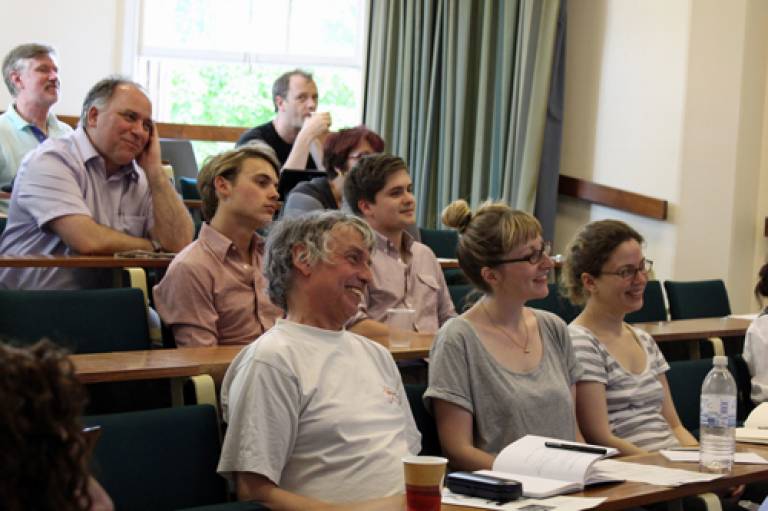Peer observation of teaching in Chemistry
The Department of Chemistry’s Dr Andrew Wills, Director of Studies, explains how peer observation of teaching can enrich small-group teaching and e-resources as well as lectures.

9 August 2013
Every member of teaching staff, whether junior or senior, both observes and is observed. Small tutorials are observed via an MP3 recording and electronic resources are also part of the discussion.
Colleagues observing teaching
In Chemistry, every member of staff both has to observe and be observed as part of the peer observation of teaching process.
At a basic level, this means that a member of staff will sit in on a teaching session, be it a lecture or a tutorial, and then discuss it with the other member of staff afterwards.
Using recordings to avoid disturbance
This year, we are introducing MP3 recordings of small tutorials, because if you have a group of five or six students then a second, unknown member of staff in the room can be a very perturbing influence; you potentially change the dynamic.
By making a recording we can listen to it afterwards hopefully without changing the session too much, so it’s an example of where technology can help us carry out a more effective observation.
Broadening to all teaching resources
We have also been thinking about ways of opening up the discussion further.
One way of doing this would be to look at someone’s electronic resources and Moodle pages. For example, making a video for the students to watch is easy but another member of staff might be able to give advice on ways of making it more useful.
Many different aspects of teaching should be involved in the process.
Even new teachers are asked to act as observers; it’s useful for them to be able to understand the process from the other side and engage in the discussion from both perspectives.
Confidentiality and openness of discussions
The discussion that follows an observation is strictly confidential: it is between those two people and we simply record that the observation has taken place.
This information is used for annual monitoring purposes so we are obliged to collate it, but that makes it very easy to lose the real point of peer observation of teaching: to have a discussion about teaching and pass on best practice, ideas, and suggestions for alternative ways of doing it.
I think the process would be more usefully referred to as ‘peer input into teaching’.
Generally, the person who is being observed arranges to have someone observe them, however we sometimes deliberately pair a new teacher with a particularly experienced staff member, or put two people together who have different teaching styles, in order to enrich the discussion.
I think everyone, regardless of their seniority, accepts that this is part of the teaching process – last year some people were observed several times. Hopefully the discussions don’t cause any offence; I think we can trust people to have an open discussion without being too blunt! A good teacher will always be open to advice and new ideas because students are a constantly changing audience and you have to adapt.
The main point is that you’re creating an opportunity for people to just talk about how they teach and that’s a rarity. We’re actually in discussions with Jason Davies (one of CALT’s School-Facing Teaching Fellows for BEAMS) and E-Learning Environments (ELE) about starting some sessions to encourage cross-fertilisation of ideas so that best practice can be shared.
 Close
Close

